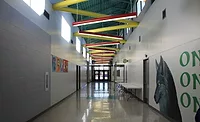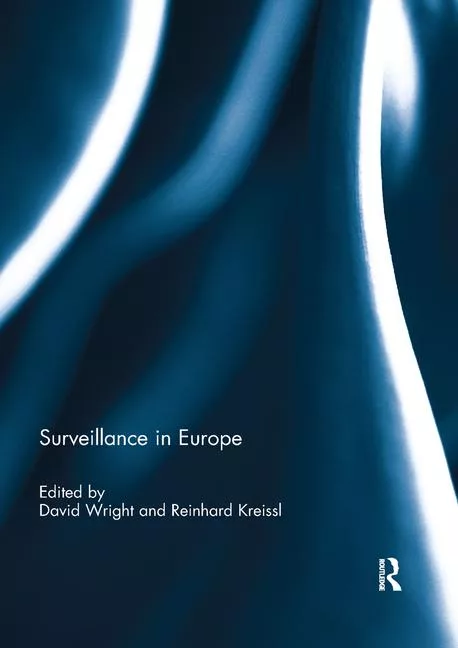Strategic video surveillance creates safer K-12 schools

The school security landscape has dramatically shifted throughout the COVID-19 pandemic. Video surveillance remains a critical tool in protecting the K-12 community, with U.S. schools investing over $360 million in physical security equipment in 2020.
Schools across the U.S. are putting their money where their concerns are and increasingly investing in new security technologies to create safer environments for our nation’s students. This investment trend is evidenced in a 2020 study conducted by Omdia on behalf of the Security Industry Association (SIA). Their report showed that the market for physical security equipment in K-12 and higher education was estimated at $716 million in 2020, with the K-12 sector accounting for around 56% of the total spend. Schools are looking to improve their physical security defenses, and video systems figure largely in strengthening that arsenal.
Overcoming challenges
Data from a 2021 survey by the National Center for Education Statics shows that students and school personnel alike each view shootings, victimization, fights, weapons and illegal substances as key concerns. These issues may only be amplified by the fact that the pandemic has acutely increased the number of young people suffering from mental health issues.
Schools, as well as the security leaders that serve them, have a tough balance to strike — keeping schools open while protecting the perimeter and making internal areas feel safe and welcoming. A comprehensive mix of strategically positioned cameras and flexible video management systems (VMS) can be powerful weapons in protecting schools and campuses.
Leveraging VMS to strengthen security district-wide
To enhance the effectiveness of district-wide efforts, it’s important to evaluate VMS platforms to ensure that the software being used is scalable and flexible. Another critical consideration for security leaders is ensuring video surveillance. A VMS should be able to integrate with other core safety, security and building management solutions based on an organization’s needs, but it should not put a heavy burden on operating costs. Many VMS offerings today facilitate a distributed video surveillance architecture that is flexible yet robust and that enable centralized monitoring to provide a district’s central control room with a view of all school building locations.
K-12 districts can leverage a VMS to allow school resource officers (SROs) and teaching staff access to live and recorded video footage, empowering them to manage local events and incidents. Options exist that provide protection against footage loss in the event of a range of network instability or power outages. A critical failover feature will recognize the issue and switch over to a redundant system to ensure an uninterrupted video stream.
The art of strategically placing cameras
To further enhance school security and facilitate district-wide resilience, cameras should not only be installed at the perimeter, but also on the school grounds. This can be instrumental in helping schools detect, identify and take action against known perpetrators before they reach the school itself. Correctly positioned high-resolution cameras with powerful zoom capabilities can provide wide-area coverage to protect building perimeters, parking lots, playgrounds and playing fields.
Security leaders can use license plate recognition (LPR) technology to help secure parking lots and automate vehicle access. For example, authorized vehicle lists will allow staff and parents to gain unhampered entry to dedicated parking spaces. Integrating visitor management systems can also streamline the arrival of guests, contractors and regular deliveries while preventing unauthorized vehicles from entering.
Video intercoms at key entry points allow staff to vet visitors before granting them access into buildings. This gives security staff critical time to assess potential threats from assailants and intruders and respond appropriately.
To cover exterior areas economically, school security stakeholders can take advantage of the recent advances in HD-TVI analog technology. These cameras can deliver high-definition image capture while leveraging existing infrastructures and managing analog cameras and devices from the same VMS interface. In addition, video wall solutions that provide a range of viewing layouts, maps and alarm information give administrators and security teams a situational overview that allows for a rapid chain of communication and response.
Out of sight, out of mind
While security is imperative in the school setting, just as important is enabling an environment that promotes learning and feelings of safety.
On the camera side, security leaders can opt for discreet and low-profile cameras, especially fisheyes, as they provide reliable, comprehensive area coverage without being intrusive. In addition, fisheyes have the benefit of being budget-friendly, as one fisheye can replace three or four traditional fixed lens cameras; they can be mounted on ceilings, poles or walls and protect against threats to students, staff and visitors. De-warped footage from these cameras is now of exceptional quality, even out to the image periphery, and will allow SROs to intervene more quickly in the event of a serious incident or threat.
Securing funding for school security
There are several federal grant programs available to help schools pay for their security needs. These programs include the Elementary and Secondary School Emergency Relief (ESSER) Fund, the Coronavirus Aid, Relief and Economic Security (CARES) Act, and the Coronavirus Response and Relief Supplemental Appropriations Act.
It’s very important, however, that all schools receiving federal funding through grants or loans comply with section 889 of the 2019 National Defense Authorization Act (NDAA).
Cybersecurity considerations
Seemingly no sector is immune to a cyberattack. Schools are increasingly reporting ransomware and other cyberattacks that have the potential to cause serious disruptions, which is shedding more light on the need to better secure their information technology (IT) systems. There is much talk and consideration in the security industry about securing Internet of Things (IoT) and networked devices to prevent unauthorized access to the organization’s networks.
With physical security systems and technologies such as cameras, encryptions that don’t impact performance, multi-factor authentication and firewalls can help prevent unauthorized access. True plug-and-play, end-to-end solutions can be ideal, as they not only use their own proprietary protocols unfamiliar to hackers, they also provide an additional layer of defense because devices mutually authenticate each other. This eliminates the need for manual passwords, which can add complexity during installation and maintenance and lead to engineers inadvertently creating cyber loopholes or leaving devices vulnerable.
Safe learning environments foster success
Security leaders today can choose technologies that go hand-in-hand with a school districts, emergency response responses and procedures and act as a force multiplier in risk mitigation, reducing costs and taking pressure off security staff, administrators and teachers, allowing them to focus on what’s important — providing students a quality education in a safe and secure environment.
This article originally ran in Security, a twice-monthly security-focused eNewsletter for security end users, brought to you by Security Magazine. Subscribe here.
Looking for a reprint of this article?
From high-res PDFs to custom plaques, order your copy today!









